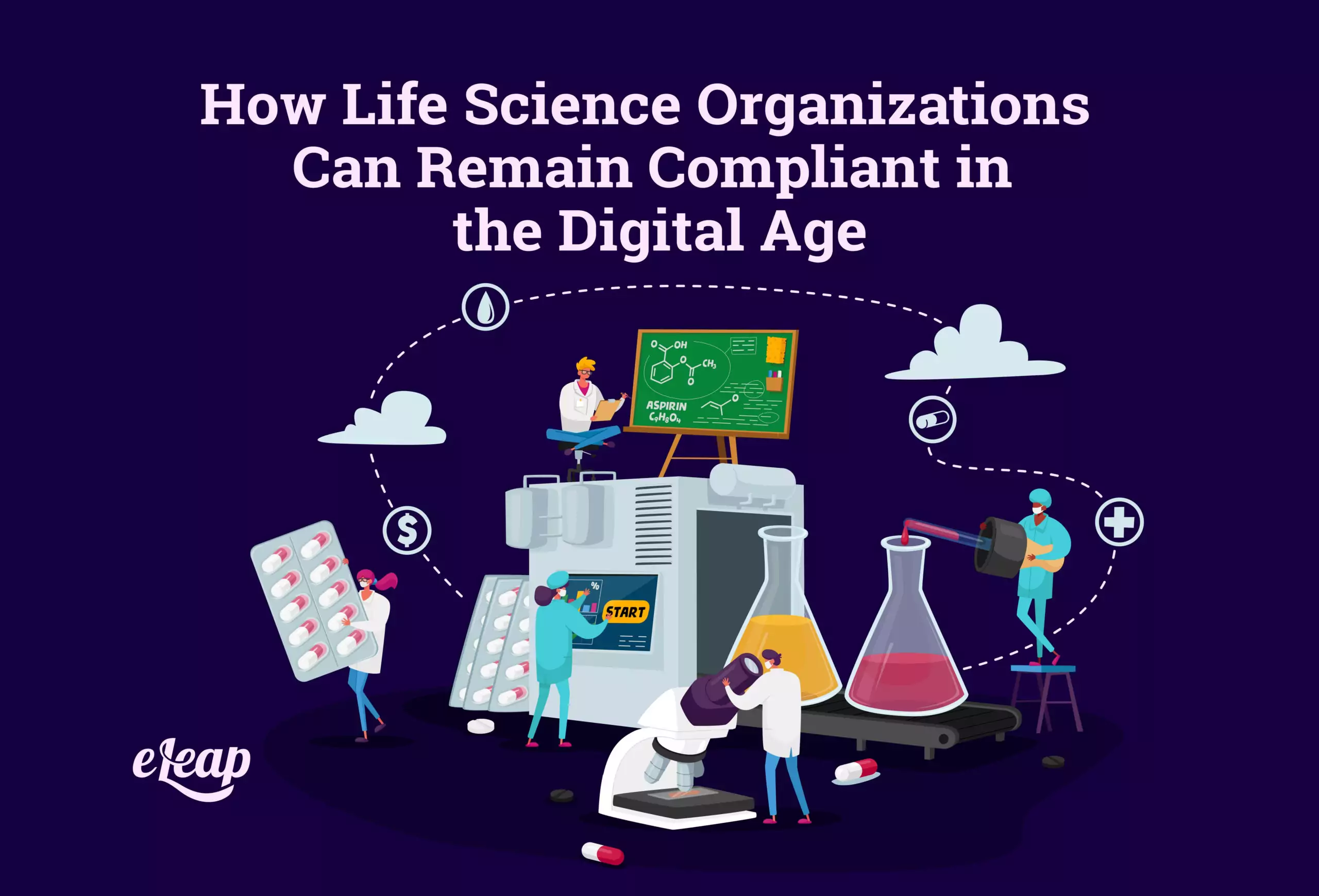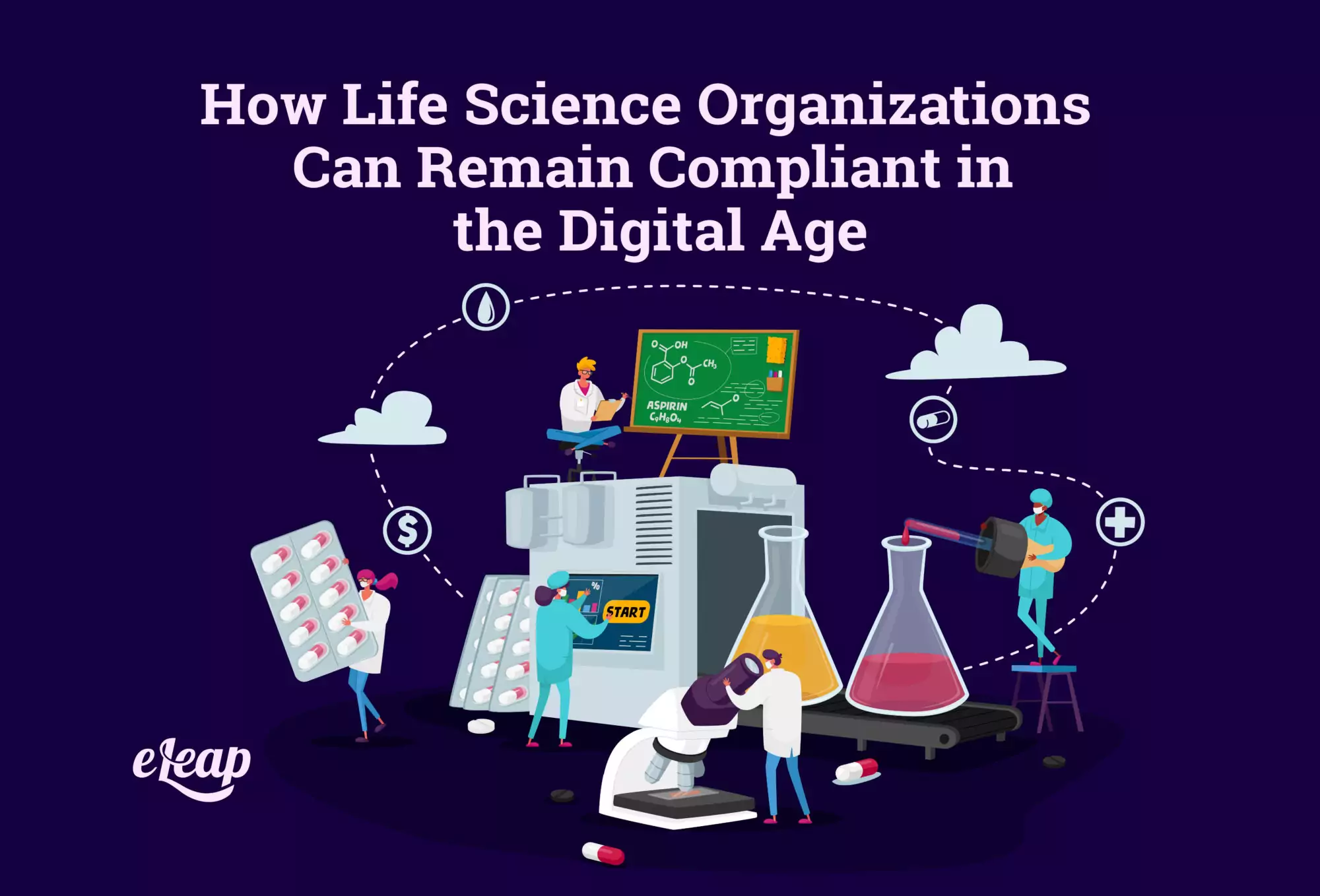How Life Science Organizations Can Remain Compliant in the Digital Age

With technology rapidly evolving, we have seen the digitization of many processes that were once done manually. The field of life sciences is no exception. Whether you’re a biopharmaceutical, medical device, research and testing, or bioscience distribution company, it is important to keep detailed records of all transactions. Signature requirements will be of the utmost importance and will need to comply with FDA requirements. These Code of Federal Regulation requirements (CFR) are outlined in Title 21 CFR Part 11.

Knowing these requirements will allow your life sciences business to stay compliant throughout all of your digital operations and will ensure that all your records are kept properly so as not to raise any red flags with the FDA. Having the right learning management system (LMS) can greatly help toward this aim— making it a critical component for any biopharmaceutical company. In this article, we will provide an overview of the CFR requirements as they are put forward in the CFR, as well as explain how the right LMS can help your business stay on top of all regulatory requirements.
What Types of Businesses Qualify as Life Science Organizations?
If your organization deals with biologics, medical devices, drugs, or a combination of any of these, you are considered a life science business. These types of businesses are going to be subject to intense FDA regulatory oversight and will need to comply with 21 CFR Part 11. The most common types of businesses that will need to comply with these regulations are:
- Biopharmaceuticals/ Pharmaceutical Companies
- Medical Device Companies
- Research, Testing, and Medical Laboratories
- Digital Health and Informatics
- Bioscience Distribution Companies
- Agricultural Feedstock and Industrial Bioscience Organizations
Of course, these companies will require federal oversight seeing as they’re dealing with a wide variety of different medical processes that can have a profound effect on the people these companies serve. These regulations are put in place to ensure that life science organizations are providing the most ethical and safe services that will not threaten the well-being of their customers.
Of these regulatory requirements, something the FDA takes very seriously is not just compliance in and of itself—but the ability to prove that your company is complying by providing the necessary documentation during any given inspection or audit of your company.
Title 21 CFR Part 11: Guidelines for Electronic Records of Biopharmaceutical Companies
Created in 1997, the FDA released its set of compliance guidelines in Title 21 CFR Part 11. These guidelines were then updated in 2003 to give more guidance on how to handle electronic records and signatures. All documentation that is electronic under CFR 21 Part 11, will need to be handled following FDA standards to be considered equal to a signed paper document.
While there are many exceptions to Part 11, there are two main standards that all documents must adhere to. The first is that any records a company is required to submit to the FDA must comply with 21 CFR Part 11. Secondly, all records that are required to be maintained but not submitted should also comply with 21 CFR part 11. As long as these records meet the requirements of Part 11, then they can be electronic. If not, you might find yourself failing to comply with FDA regulations.
Requirements of 21 CFR Part 11 for Compliant Electronic Records
In the field of life sciences, the FDA categorizes computerized systems as either a closed system or an open system. Regardless of which computerized system you use, the basic requirements will be the same. However, open systems will have a couple of extra requirements that will need to be met. Here is a general overview of the guidelines set by Part 11:
Validation of Systems
All life sciences companies that are tasked with the job of keeping records will need to be able to validate their systems to ensure accuracy, reliability, and consistent performance. They will also need to have the ability to detect or invalidate altered records.
The Ability to Generate Accurate and Complete Copies of Records
Life sciences organizations will need to be able to retrieve accurate and complete copies of records that should be both in human-readable and electronic forms that are suitable for inspection, review, and copying by the agency. If you’re confused about whether or not an agency can perform such a review on any given document, it is recommended that you contact the agency for further clarification regarding the review and copying of electronic records.
Protection of Records
All electronic records will need to have a certain level of protection to enable their ability to be accurately retrieved throughout the record’s retention period.
System Access to Authorized Individuals
All records in the system need to be limited in access to only individuals who are authorized to retrieve them.
Secure Computer-Generated and Time-Stamped Audit Trails
All records need to use secure computer-generated, time-stamped audit trails to independently record the date and time of operator entries and actions that create, modify, or delete electronic records. Record changes should not make previous electronic records unclear. All audit trail documentation is to be held for as long as it takes for the electronic records in question to be reviewed and copied by the agency.
Operational System Checks
All systems need to be equipped with operational system checks that can enforce the allowed sequencing steps of events.
Authority Checks
Automated systems should include the use of authority checks to ensure that only authorized individuals have access to the system whereby they will be able to electronically sign a record, access the operation or computer system input or output device, alter records, or perform an operation by hand.
Use of Device Checks
All systems will need to have terminal checks that can determine the validity of source data inputs and other operational instructions.
Training and Education Verification
All life sciences companies need to ensure that the people who develop, maintain, or use the electronic record/signature systems have the necessary education, training, and experience to perform these tasks.
Compliance with Written Policies
Life sciences organizations will need to have established written policies that will hold individuals accountable for the actions initiated under their electronic signatures. This policy is put in place to discourage record and signature falsification.
System Documentation Controls
Life sciences organizations will need to implement the appropriate controls over their systems documentation programs, including the necessary controls over the distribution, access, and use of the documentation for system operation and maintenance processes.
Open Systems
Companies using an open system for records need to comply with all the requirements listed above. They will also need to make sure they comply with some additional measures, including document encryption and the use of the correct digital signature standards to ensure the authenticity, confidentiality, and integrity of all documents.
Having gone over the primary requirements that need to be kept in mind when dealing with electronic records it is important to also be aware of the specific signature requirements that are outlined in the CFR. These requirements can be reviewed carefully on the Code of Federal Regulations website. For additional information, you can also consult the pages available on eLeaP, which explain the requirements around electronic signatures in easy-to-understand language. Here are some references that can help you get started: 21 CFR Part 11 Electronic Signature and 21 CFR Part 11 Electronic Records Electronic Signatures Validation.
Does Your Company’s LMS need to Comply with 21 CFR Part 11?
Having listed all the necessary regulatory guidelines that life sciences organizations need to be in compliance with, you might be thinking that this seems pretty straightforward. However, if you review the requirements a little more closely, you might find that many of the guidelines set forth are actually quite complex. This is especially true when you consider all the different software applications a life sciences company uses. Many of these applications will be subject to the regulatory guidelines laid out in 21 CFR Part 11. With that said, all such software will need to be compliant. Of this software, cloud-based SaaS (software-as-a-service) will need to follow the requirements of Part 11.
The truth is that many life sciences organizations don’t recognize that the LMS software used for training and education will also need to follow the regulations that fall under 21 CFR Part 11. Luckily, there is a compliant LMS system out there that can fulfill your company’s needs while also complying with the standards laid out in 21 CFR Part 11. This LMS system is eLeaP LMS. If you need a learning management system that will keep your company compliant with 21 CFR Part 11, contact us today to see what we can do for your life sciences business.